Every time I see an adult on a bicycle I no longer despair for the future of the human race. —H.G. Wells
Fast, efficient and individualistic, the bicycle is no ordinary mode of transport. It’s a church, a gym, a community creator, a cash printer, a protest placard, a dopamine generator, a mechanical expression of self-determination, an icon of hope. It is touchable, attainable freedom.
It is also a tool for nature conservation and one that the City of Cape Town—indeed, any city—stands to benefit from.
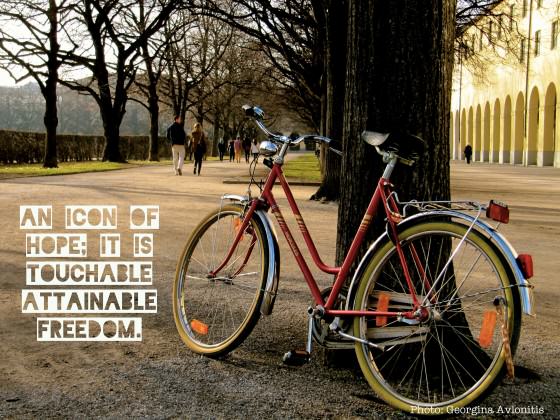
My father is a boisterous character, half-man half-bicycle. Last month, he cracked two ribs after tumbling over his handlebars. I profited from his misfortune by taking his place in the world’s largest individually-timed cycle race, the Cape Argus. Egged on by minstrel bands and reels of cheering supporters, some donning fancy dress, I joined over 30,000 competitors to pedal 110 km around the breath-taking Cape Peninsula. The race is a magnificent celebration of sport, healthy living, unity and nature. It physically exposes and connects people to the region’s awe-inspiring natural beauty. The organizers are well aware of this, having furnished all finishing medals with images of iconic local species and the words, “Our Natural Heritage”.
The experience left me wondering whether bicycles could meaningfully contribute to nature conservation in a broader sense. The answer appears to be multifarious.
1. More bikes = more connectivity, awareness, compassion, and innovation
Exposure to nature nourishes the soul and fosters compassion for wildlife (and for fellow humans), especially in children. Urban citizens who never encounter wildlife, who never marvel at the complexity and fragility of nature, may feel indifferent to its plight.
By liberating green space and enhancing mobility, bicycles can reconnect people to nature and to each other. On a bicycle, one cannot turn up the music, wind up the windows, lock the doors and adopt tunnel vision. On a bicycle, one is exposed and alert to their surroundings. One is manoeuvrable, approachable and distractible. One can divert, slow and stop to examine oddities, follow intriguing scents, chat to curious strangers, explore unchartered streets, or just quietly observe wildlife.
With eyes and ears on the ground, cyclists feel a greater sense of place and a stronger connection to their neighbourhoods. Such interaction may ignite compassion for a city, its nature and people; inspire innovations for improving urban liveability; and instil the motivation to set about doing so. Certainly, cycling can render us happier, healthier, wealthier and calmer with more time and money to spare for community-centred activities including nature conservation.
Imagine:
- A community of cyclists, proactively interested in their city, its nature and its people.
- The ideas they will devise, develop and share, aimed at improving their city.
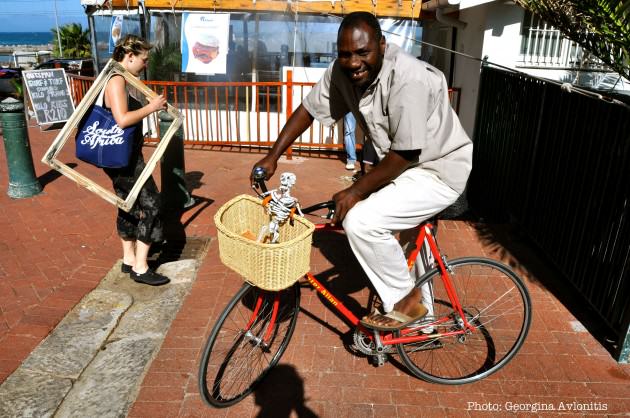
2. More bicycles = more space for nature
I recently visited a suburb of Johannesburg. Ecologically dull, aesthetically grim, traffic congested, socially segregated, it is dominated by roads, car parks and shopping complexes—a superb example of bad urban planning, a suburb designed for cars not people. Yet it resembles much of the modern world—a world that is rapidly transforming through low-density car-infatuated urban sprawl.
A bicycle consumes only a slither of the space that a car does, both in terms of lane width and storage/parking area.
Imagine:
- The potential for reducing traffic congestion by converting car drivers into cyclists.
- The projected urban sprawl that could be averted and the natural habitats that could be saved.
- The area of concrete and tarmac that could be reclaimed, liberated and transformed into ecologically-vibrant, socially-inclusive multifunctional public space.
3. More bicycles = less pollution, more resources
The life-cycle of vehicles and the road infrastructure that they necessitate is resource-ravenous and waste-flatulent. At the point of sale, a new car has already inflicted ecological damage globally not least through the extractive industries that support its manufacture. Regardless of manufacturing, conventional cars are woefully inefficient. Why do we need vehicles that are typically 25 times heavier than our own bodies? What a waste of natural resources! What needless environmental degradation!
Even if distant impacts are “out of sight, out of mind” then surely local impacts elicit concern. Vehicle emissions contribute to urban smog, impart respiratory illnesses and stain our lungs grey. Hydrocarbons, break fluids and other chemicals leak from cars poisoning our waterways. Noise pollution from traffic and road construction shakes the ground, awakens the sleeping and stresses the awake.
An average bicycle, on the other hand, produces comparatively negligible pollution. It weighs around one-sixth of our body weight and less than one-hundredth of an average car. It moves in silence, causing little disturbance to wildlife. Its full life-cycle impacts are dwarfed by those of a car.
Imagine:
- The potential reduction in air, noise and water pollution by converting car drivers into cyclists.
- The consequent enhancement of a city’s resource-efficiency and the reduction of its ecological footprint.
- The water, mineral and energy resources that could be saved.
4. More bikes = more environmental justice
Green infrastructure generates multiple ecosystem services that support human wellbeing including education, recreation, spiritual fulfilment, storm water absorption, climate regulation, and food production. In an increasingly urbanized world, maintaining direct access to such benefits is challenging. Communities may suffer ‘nature deficit disorder’ which hinders child-development and induces psychological ailments. You are not alone if you can identify the logos of obscure commercial brands better than common bird or tree species. Affordable, safe public transport is not always available for carless families wanting to visit green spaces beyond walking distance.
Bicycles can address such environmental injustice: (1) by alleviating road traffic to allow for the establishment of additional green space; and (2) by extending one’s radius of accessible area to encompass otherwise inaccessible ecosystem services.
Imagine:
- Establishing more equitably-distributed green space.
- Enhancing the mobility of carless citizens to enhance the accessibility of ecosystem services.
Love is a dangerous game
Despite the enormous enthusiasm for cycling, so palpable at the Cape Argus, only a tiny, albeit increasing, proportion of Cape Town’s inhabitants dare to cycle on a regular basis. Their reasons appear multifarious yet rooted in fear: fear of colliding with reckless drivers (taxis deserve a special mention here for frequently endangering the lives of cyclists); fear of exposure to violent crime; fear of inhaling noxious traffic fumes; fear of arriving sweaty at work; and fear of being stigmatized.
These fears are legitimate, but all can be overcome. Local movements like the monthly Moonlight Mass and the annual Naked Bike Ride are helping to raise awareness of cycling in the city. For over a decade, NGOs like the Bicycle Empowerment Network have been addressing poverty and mobility through the promotion of cycling in low-income communities. However, the keys to a more bicycle-friendly city that reaps the aforementioned social and ecological benefits, lie primarily in the hands of the local government.
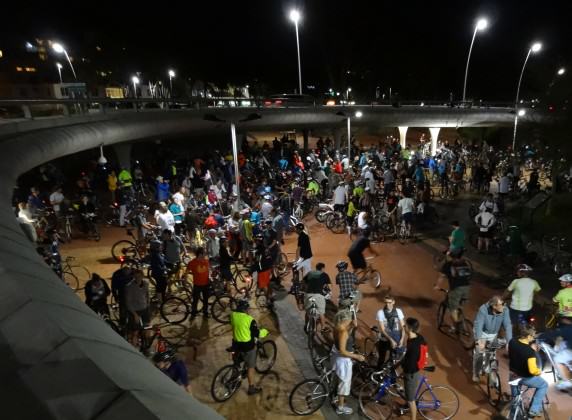
The City of Cape Town will become the 2014 World Design Capital presenting unprecedented opportunities to support urban initiatives fostering social and environmental progress; an opportunity to deploy the bicycle as an agent of urban transformation and as a catalyst for nature conservation.
To achieve this, the local government must:
- Strengthen the protection of cyclists, better inform drivers, and enforce road safety;
- Expand the network of formal cycle lanes and allow bicycles on board public transport;
- Improve street lighting and tighten security to reduce crime;
- Improve air quality by taking meaningful measures to reduce traffic congestion;
- Launch a well-framed public campaign to promote cycling;
- Incentivize employers to provide showers in the work place;
- Identify and pedestrianize priority roads (e.g. Long Street and sections of Main Road).
By embracing the bicycle and its associated benefits, Cape Town will truly stand apart as a forward-looking, innovative city designed not for its cars, but for its people and the nature that underpins their wellbeing and prosperity.
Russell Galt
Cape Town

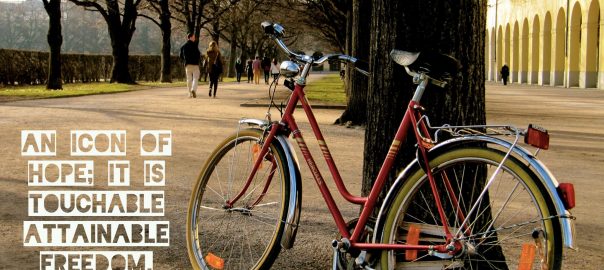






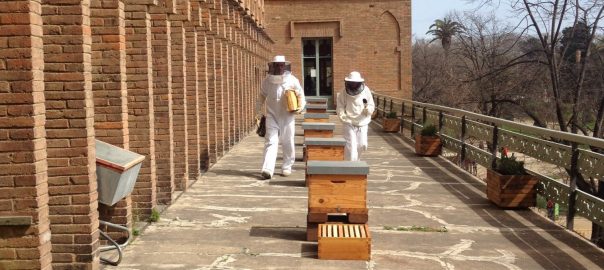
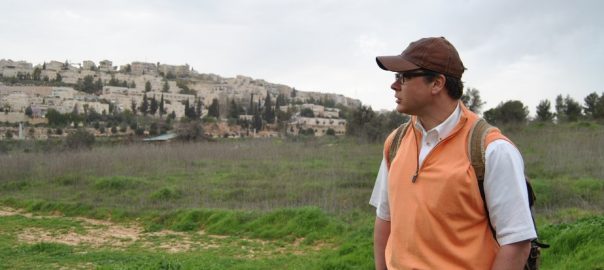
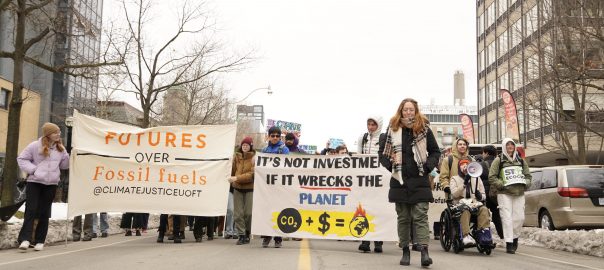
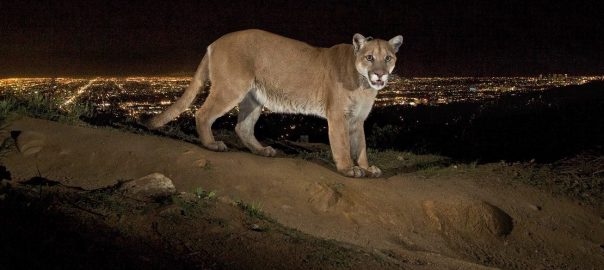
I real like how you connect bicycle story and environmental conversation
As one among environmentalist am planning to start designing environmental journal
I grew up in a rural town in a time when not all families owned a car and every household had bicycles or as we called them bikes. Most children rode their bikes on a daily basis to school, sports events and friends’ houses. Many adults rode their bikes to work. Now, that rural town has grown and hardly anyone rides a bike on a day-to-day basis.
I moved to a large city where I notice an intrepid minority take to the bikeways and public roads to commute to work, study centres, shops etc. Nowadays, it seems a large proportion of people who own bikes mount up mostly on weekends, dress in lycra, travel in packs and whiz through the landscape. Those who take to cycling as a fitness regime and for competition seem to far outnumber the singles, families, couples, friends who cycle as a way of connecting with each other and to their landscape. I wonder what value those in the former ‘market’ niche (and that is certainly how they are viewed by the cycling ‘accoutrement’ suppliers) place on the landscape they traverse.
Cycling does improve health (physical and mental), contribute to a cleaner environment and can connect people with nature. It is a wonderful way to get around (as is walking surprisingly!) and let’s advocate for much more of it. However, I am concerned that some planning authorities, vested commercial interests and niche-cyclist groups use these same arguments to justify developments (e.g. high speed downhill mountain bike racing in natural settings) that at the same time contribute to the degradation and, in some cases, destruction of pristine natural areas. Humans’ pursuit of recreation, pleasure and the so called ‘eco-tourism’ economy should not incur the loss of habitat resources for thousands of other species and thus diminish the increasingly threatened biodiversity on this planet.
Love this! Thank you for sharing!
Love this! You are just so right. Here’s evidence to support one of your points. Regularly, cycling along with my 3 1/2 year old, he will say heart warming things like:
“Mummy – can you hear those birds singing up there. I love their cheep cheep song!”
“Mummy – look at those beautiful flowers, I really like the colours”
You see! Couldn’t do that in the car.
Great article Russell! Very oportunistic and urgent to ally nature and clean transportation in our urban environments.
Bikers will proliferate when our decision makers understand how important they are for healthy and happy people in beautiful sustainable and resilient cities.
Thanks!
A fine essay on the environmental and civic virtues of the bike, Russell. Just sending you a nod of agreement and solidarity from the American Midwest, where I cycle around my bike-lane challenged hometown of Joliet, IL, about 40 miles SW of Chicago. Here are a couple of essays I’ve dashed off about my local adventures biking around town — an endeavor that’s not always easy, but always worthwhile.
http://sites.roosevelt.edu/mbryson/2013/04/12/bike-to-coffee-shop-get-to-work/
Hi Chris, many thanks for your kind remarks. I’m glad that you like the blog site. Next up is Erika Svendsen of New York City.
Thanks Bill for sharing your insightful thoughts and case studies.
How to get urban planners and residents to make more and better room for cycling?
Examples abound in certain European neighborhoods where the needs of cyclists and pedestrians are rightly prioritized over the needs of drivers. The effect is self-perpetuating: the more conducive an urban area is to cycling and walking, the more persuadable people will be to forgo their cars.
Distance is not really an issue given that the majority of urban car journeys are less than 5 km. People burn plenty of calories on treadmills each morning.
Retrofitting may be politically challenging but it can be achieved. In Brussels, a car-free day is organized each year; in Montreal, popular streets have been pedestrianized for months at a time; and in Copenhagen, an entire network of lengthy central streets are permanently off-limits to cars. Far from stifling commerce, these measures have been shown to boost local economies by drawing large crowds of people to desirable, car-free public space.
I understand that world is hooked on cars, but there are pockets of hope. In the US, 16 year-olds are no longer rushing to acquire their driving licenses (down from 50% to 28% in 30 years).
Furthermore, the explosive urban growth that is projected over the next few decades, presents architects and planners with an opportunity to re-imagine our future cities, an opportunity to get it right first time.
Certainly there are daunting barriers, but none are insurmountable. Having said that, I wouldn’t fancy cycling through an Alaskan winter!
Great article Russell. I’m so glad I came across this blog/website. I am sharing this with the Revelstoke Bike to Work Week facebook page!
Russell, thanks for your musings on cycling and nature conservation. As a dedicated walker as well as a car owner and occasional cyclist who lives in Alaska’s urban center, Anchorage, I appreciate any ideas that get people to slow down, pay more attention to the larger world of nature, and diminish our species’ harmful impacts on the Earth and its inhabitants. I agree that bicycles are a far more Earth friendly mode of transport than motorized vehicles. That said, I wonder how you propose to get urban planners—not to mention us car/truck/SUV-addicted urban residents—to make more and better room for cyclists, never mind shifting to a cycling-based transportation system. It sounds great in theory . . .
I’ll mention that Anchorage has both a world-class system of bike trails (also popular with skiers, hikers, dog walkers, etc.) and a substantial community of cyclists, including a hardy few who cycle year-round, some even commuting to and from work on their wheels despite winter’s challenges. But there are inevitable conflicts between cyclists and car drivers who don’t like sharing the roads (trails won’t get you everywhere you want or need to go in Anchorage). And the city’s snowplowing priorities make winter travel difficult, and sometimes nearly impossible, for both the city’s pedestrians and cyclists.
Beyond that, as a walker I’ve noticed that many cyclists on local trails seem more interested in speed and training or simply “getting there” (wherever there is) than paying attention to the woodlands and wildlife that they whiz pass. I would argue that many do have their own form of tunnel vision, paying attention only to what’s on the trail ahead, rather than what surrounds them. One of the reasons that I choose to walk (recreationally) rather than cycle in summer or ski in winter, is that I notice much more of what’s going on around me, and I’m more likely to stop and listen to natural sounds, particularly bird songs, or to look more closely at what’s moving through the forest, than the skiers or bicyclists who rush past. A couple striking examples of cyclists’ lack of awareness of their surroundings: Once, on Anchorage’s popular Coastal Trail, I watched beluga whales swim through Cook Inlet while dozens of bicyclists and runners passed, completely unaware. And a few years ago a teenage cyclist participating in an organized event was attacked by a grizzly while biking at night on a trail not far from a salmon stream known to attract bears. Ignorance or denial can be a problem, even with cyclists (and walkers).
While I see plenty of challenges ahead, both within our urban fossil fuels-dependent culture and even within the cycling community itself, I do strongly support Earth friendlier initiatives such as you propose. Thanks for tossing out your ideas and opening them up to discussion.